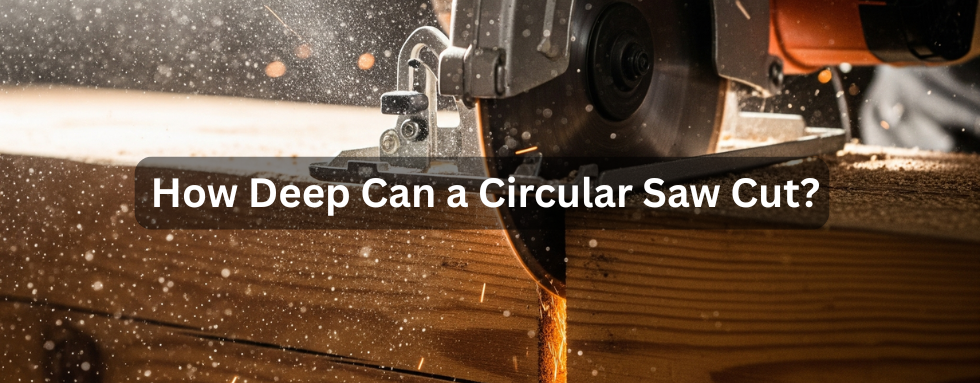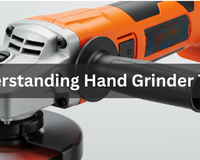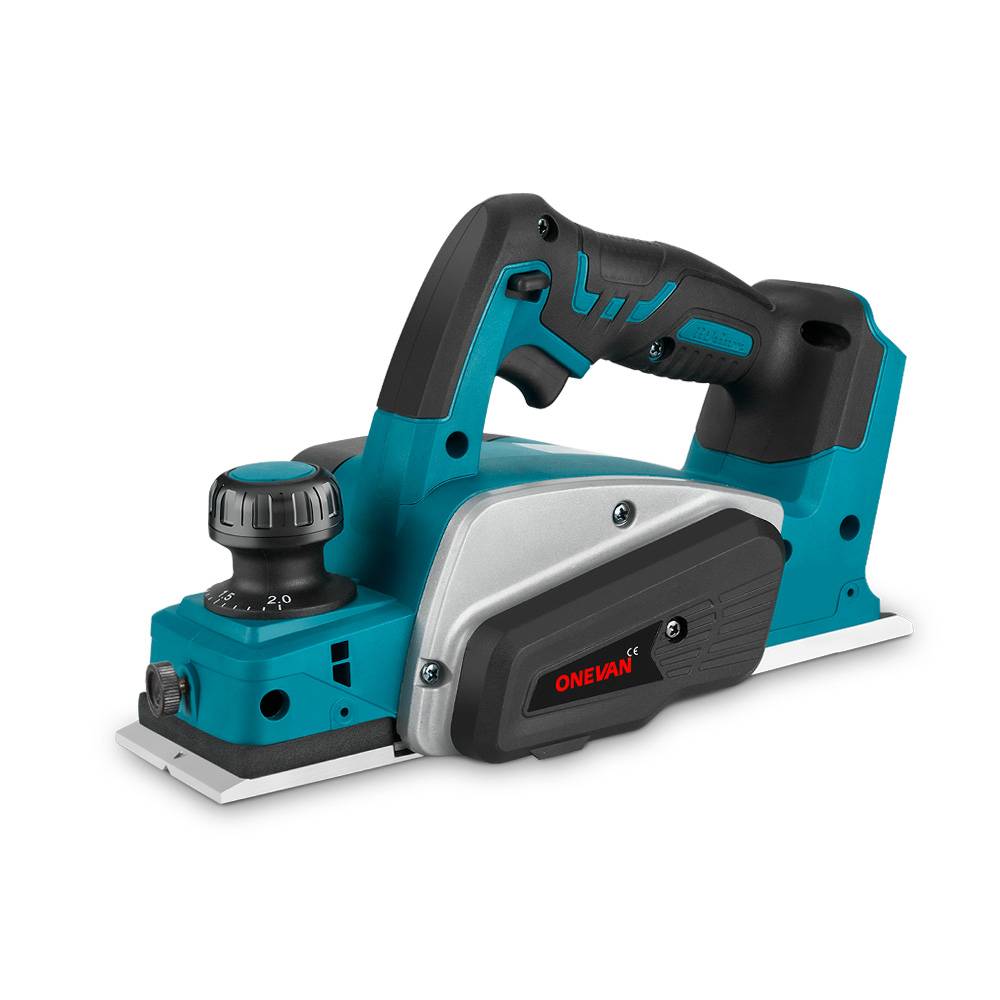La profundidad de corte es un concepto vital para cualquiera que trabaje con madera o metal, pero es especialmente crucial para materiales aptos para sierras circulares. Una sierra circular ofrece control y rapidez, tanto si se trata de crear una tabla impecable como de cortar vigas de techo. Además, la falta de conocimiento sobre la profundidad de corte exacta puede paralizar todo el proyecto. Algunas personas eligen una herramienta suponiendo que puede manejar todas las dimensiones. Otras calculan mal su tarea y eligen una herramienta inadecuada. Conocer la profundidad correcta hace que el trabajo sea más seguro, rápido y preciso. Mucha gente se pregunta "¿qué tan profundo corta una sierra circular?" y "¿qué tan profundo se puede cortar con una sierra circular?" incluso antes de empezar a trabajar. Estas preguntas ayudan a reducir errores y a evitar el desperdicio de madera. Elegir la sierra circular adecuada influye en todo: comodidad, calidad del acabado y ritmo de trabajo.
1. ¿Cuál es la profundidad de corte de una sierra circular?
La profundidad de corte se refiere esencialmente a la penetración máxima de la hoja. Es el alcance máximo que la hoja de la sierra circular puede alcanzar en una sola pasada. El fabricante de la herramienta proporciona esta medida, generalmente en pulgadas o milímetros, que indica la profundidad máxima de corte alcanzable cuando la sierra circular se sostiene a 90 grados con respecto al material que se está cortando. Cuando el material excede la capacidad de la sierra circular, debe voltear la pieza. A continuación, se realiza un segundo corte desde el otro lado. Además, la placa base de la sierra circular, o zapata, también es un elemento clave. El diseño de la placa base, incluyendo su grosor y su interacción con el ajuste de profundidad de la hoja, puede afectar la profundidad máxima de corte alcanzable.
Comprender la profundidad de corte de una sierra circular ayuda a evitar retrasos en el proyecto. Antes de comenzar, verifique siempre el diámetro de la hoja y los detalles técnicos de la sierra circular.
2. Factores que afectan la profundidad de corte de una sierra circular
-
Tamaño de la hoja
El tamaño de la hoja es el principal factor determinante de la profundidad de corte de una sierra circular. Las hojas más grandes se proyectan más profundamente debajo de la base de la sierra. Por lo tanto, una hoja de 7 1/4 pulgadas corta más profundo que un modelo de 6 1/2 pulgadas. Este diámetro es un indicador directo de la capacidad de corte.
Los fabricantes diseñan sierras circulares con tamaños de hoja específicos para lograr la máxima eficacia. Las dimensiones del mandril deben alinearse perfectamente con el orificio central de la hoja. Usar una hoja incorrecta puede dañar la sierra circular y, además, generar graves riesgos de seguridad.
Los tamaños de hoja estándar incluyen medidas comunes como 4-3/8", 7-1/4" y 10". Cada tamaño de hoja se asocia comúnmente con ciertas aplicaciones, pero muchos tamaños también pueden funcionar bien en una variedad de tareas según las necesidades del usuario. -
Tipo y estado de la cuchilla
La calidad de la hoja es crucial. Una hoja desafilada, desgastada o doblada no corta bien. Los dientes con punta de carburo duran más y mantienen un grosor constante. Las hojas con dientes más finos están diseñadas para cortes más suaves, lo que puede resultar en velocidades de corte más lentas, mientras que las hojas con menos dientes suelen ser más agresivas y pueden eliminar material con mayor rapidez, pero no siempre ofrecen la misma calidad de acabado. Con el tiempo, los bordes desgastados pueden incluso reducir la profundidad del corte. Inspeccione siempre la hoja antes de cada proyecto. Por lo tanto, reemplazar las hojas viejas ayuda a mantener un rendimiento de profundidad constante.
El número de dientes afecta significativamente el rendimiento de corte. Las hojas con menos dientes (24-40) cortan más rápido en materiales gruesos. Un mayor número de dientes (60-80) produce acabados más lisos, pero corta más lentamente. El tamaño del canal entre los dientes determina la eficiencia de la extracción de viruta. Una correcta evacuación de la viruta evita el atascamiento y el sobrecalentamiento. -
Ángulo de bisel
Al inclinar la sierra circular para realizar un corte biselado, la profundidad de corte puede disminuir significativamente, lo que a menudo resulta en una profundidad máxima menor que la de un corte recto, especialmente en ángulos pronunciados como 45 grados. Siempre debe verificar la escala de biselado de la sierra. Consulte la tabla de profundidad antes de comenzar. Esto le ayudará a realizar uniones y marcos precisos, lo que evitará errores. -
Diseño de sierra circular
La carcasa, la posición del motor y la disposición de la protección de cada sierra circular pueden modificar la profundidad de corte. Algunas sierras circulares cuentan con protecciones de perfil bajo y placas base aerodinámicas, lo que permite que las hojas se extiendan más profundamente en el material. Por ejemplo, la sierra circular inalámbrica sin escobillas ONEVAN de 180 mm y 7 pulgadas está diseñada para maximizar el alcance de la hoja mediante un diseño inteligente. Por el contrario, las placas de base gruesas limitan la profundidad, así que compare las especificaciones de cada fabricante antes de comprar.
La ubicación del motor afecta el equilibrio y la profundidad de corte. Las sierras de corte lateral, que colocan el motor junto a la hoja, suelen ser más ligeras y maniobrables, lo que las hace ideales para tareas de corte generales, mientras que las sierras de tornillo sin fin, con el motor detrás de la hoja, proporcionan mayor par para materiales más pesados. Cada diseño ofrece diferentes ventajas para aplicaciones específicas. -
Material que se está cortando
El tipo de material también es importante. Las maderas más blandas, como el pino, suelen cortarse con mayor facilidad, pero lograr un corte limpio puede requerir la potencia adecuada para evitar desgarros o astillas. Las maderas duras densas, el contrachapado grueso o la madera industrial requieren un avance más lento y sierras más resistentes. La resistencia en materiales duros puede reducir la profundidad funcional. Además, las hojas diseñadas para madera no deben utilizarse en acero ni mampostería, ya que esto reduce tanto la seguridad como el corte máximo.
La madera verde o húmeda se corta de forma diferente a la madera seca. El contenido de humedad afecta la carga de la hoja y la formación de virutas. Las maderas resinosas, como el pino, pueden obstruir las hojas rápidamente. Las maderas duras exóticas pueden requerir calidades de carburo excepcionales para obtener los mejores resultados.
La madera de ingeniería presenta desafíos únicos, como una mayor densidad y la presencia de adhesivos, lo que puede requerir hojas y técnicas de corte especializadas para obtener resultados óptimos. La LVL (madera laminada de chapa) es muy densa y compleja en las hojas. La PSL (madera de hebras paralelas) se corta limpiamente, pero las hojas se desafilan más rápido. Las líneas de encolado en la madera contrachapada y el OSB son particularmente abrasivas para los bordes de corte. -
Fuente de alimentación y potencia del motor
La fuente de alimentación, con o sin cable, afecta la eficiencia de la hoja. Un suministro eléctrico constante garantiza que la sierra circular mantenga una velocidad y potencia óptimas, lo que ayuda a alcanzar la profundidad de corte nominal con eficacia. Las sierras circulares inalámbricas , como la sierra circular inalámbrica sin escobillas ONEVAN de 180 mm , ofrecen una mayor autonomía, pero las baterías débiles o descargadas pueden limitar la profundidad a mitad del trabajo. Comience siempre con una herramienta completamente cargada y baterías de alta capacidad para obtener el máximo rendimiento.
El amperaje del motor indica la potencia en las sierras circulares con cable. Un mayor amperaje generalmente significa mayor potencia de corte. Las potencias típicas para sierras circulares oscilan entre 10 y 15 amperios. Los motores más potentes mantienen mejor la velocidad bajo carga.
El voltaje de la batería influye significativamente en el rendimiento de la sierra circular inalámbrica, ya que los sistemas de voltaje más alto (como 20 V o 36 V) generalmente proporcionan mayor potencia y capacidad de corte en comparación con los sistemas de voltaje más bajo.
Los sistemas de 18 V y 20 V máx. son los más comunes. Algunos fabricantes ofrecen herramientas de 36 V y 60 V máx. para trabajos pesados. La capacidad de la batería en amperios-hora determina la autonomía entre cargas. Las baterías con mayor capacidad en amperios-hora duran más, pero pesan más. -
Ajuste de profundidad
La palanca de ajuste de profundidad permite al usuario ajustar la profundidad de la hoja bajo la zapata. Ajustar la velocidad correctamente funciona y aumenta la seguridad. Como regla general, ajuste la profundidad de la hoja a aproximadamente 3 mm (1/8 de pulgada) por debajo de la base de la madera que se está cortando. Esto produce resultados más suaves y reduce el peligroso contragolpe.
Los mecanismos de ajuste de profundidad varían según el modelo de sierra circular. Las palancas con resorte permiten ajustes rápidos. Las perillas roscadas ofrecen ajustes más precisos. Algunas sierras circulares incluyen escalas de profundidad para mediciones precisas. Siempre bloquee firmemente el ajuste de profundidad antes de cortar.

3. ¿Qué tan profundo puede cortar una sierra circular?
¿Qué tan profundo puede cortar una sierra circular de 7 1/4 pulgadas?
Profundidad de corte estándar:
Una sierra circular de 7 1/4 pulgadas suele cortar a una profundidad máxima de aproximadamente 2 5/8 pulgadas a 90 grados. En un bisel, esta profundidad disminuye, llegando a cortar a aproximadamente 1 13/16 pulgadas.
Aplicaciones típicas:
Los carpinteros prefieren este tamaño para madera de doble cara, entablado de terrazas, láminas OSB y contrapisos. Profesionales y propietarios de viviendas utilizan máquinas como la sierra circular inalámbrica sin escobillas ONEVAN de 125 mm para enmarcar casas, cortar escalones de escaleras y desbastar contrachapado grueso.
Este tamaño permite realizar la mayoría de las tareas de construcción residencial de forma eficiente. Las vigas estándar de 2x10 se cortan en una sola pasada a 90 grados. La madera de ingeniería, como el LVL, suele requerir esta capacidad de profundidad. Los materiales gruesos para encimeras también se incluyen en este rango.
El tamaño de 7-1/4" ofrece el mejor equilibrio entre potencia y portabilidad. La mayoría de los fabricantes construyen sus modelos de gama media en torno a este tamaño de hoja. Los enmarcadores profesionales suelen elegir este tamaño para mayor comodidad durante todo el día.
Consejos para el usuario:
Mida la caída de la hoja con el calibrador de profundidad. Asegúrese de que el bloqueo sea correcto antes de cortar. Además, destape siempre la protección, ya que el aserrín compactado puede bloquear el descenso de la hoja.
¿Qué tan profundo puede cortar una sierra circular de 10 pulgadas?
Profundidad de corte estándar:
Con una hoja de sierra circular de 25 cm (10 pulgadas), la profundidad máxima promedio se acerca a los 9 cm (3 3/4 pulgadas) a 90 grados. Los cortes en ángulo reducen ligeramente esta cifra.
Aplicaciones típicas:
Utilice esta sierra circular para postes, traviesas de ferrocarril, vigas macizas y madera recuperada gruesa. Permite la mayoría de los cortes de una sola pasada en madera de construcción y postes para cercas. Los proyectos de construcción pesados se benefician de esta capacidad de corte. La madera de grandes dimensiones, como las vigas de 4x12, se corta eficientemente. Los trabajos de entramado de madera a menudo requieren este rango de profundidad. Los proyectos de paisajismo con postes gruesos necesitan esta capacidad.
El peso adicional requiere mayor fuerza y resistencia del usuario. La operación a dos manos se vuelve crucial para la seguridad. Los soportes de apoyo facilitan el manejo de piezas pesadas durante el corte.
Consejos para el usuario:
Alinee la línea de corte con cuidado. Use una abrazadera para materiales pesados y difíciles de cortar. Además, retire siempre los clavos ocultos, ya que las hojas grandes retroceden con fuerza al impactar con el metal.
¿Qué tan profundo puede cortar una sierra circular de 12 pulgadas?
Profundidad de corte estándar:
Las sierras circulares de doce pulgadas generalmente alcanzan una profundidad de corte máxima de alrededor de 4 pulgadas con una inmersión completa, dependiendo del modelo específico.
Aplicaciones típicas:
Estas sierras circulares funcionan en zonas de construcción donde el grosor de las tablas excede los límites normales, como vigas de granero o troncos especiales para jardinería. Su tamaño facilita el manejo de madera extragrande.
Las aplicaciones especializadas impulsan la necesidad de este tamaño. La construcción de puentes utiliza madera pesada que requiere esta profundidad. La construcción de cabañas de troncos se beneficia de esta capacidad de corte. Las aplicaciones industriales suelen especificar este tamaño.
El peso y el tamaño hacen que estas sierras circulares sean menos adecuadas para trabajos por encima de la cabeza. Un soporte adecuado es fundamental para una operación segura. Muchos modelos incluyen asas auxiliares para un mejor control.
Consejos para el usuario:
Verifique el apriete de la cuchilla. Para cortes profundos, deje que el motor alcance la velocidad máxima antes de entrar. Además, programe descansos para enfriar tanto el motor como las manos.
¿Qué tan profundo puede cortar una sierra circular de 5 1/2 pulgadas?
Profundidad de corte estándar:
Una sierra circular de 5 1/2 pulgadas generalmente realiza cortes de aproximadamente 1 3/4 pulgadas de profundidad como máximo.
Aplicaciones típicas:
Este tamaño es perfecto para paneles limpios, molduras finas, acabado de madera o para trabajos de afición. Los modelos ligeros reducen la fatiga, lo que los hace ideales para cortes por encima de la cabeza o verticales.
La carpintería de acabado se beneficia de la precisión que ofrecen estas sierras circulares. El trabajo de ebanistería a menudo requiere este nivel de control. La instalación de molduras se facilita con herramientas más ligeras. Este tamaño es ideal para proyectos de bricolaje en casa.
La reducida capacidad de corte limita las aplicaciones estructurales. La mayoría de las maderas de 2x superan este rango de profundidad. La madera contrachapada y los productos laminados funcionan bien dentro de estos límites.
Consejos para el usuario:
Trabaje lentamente con maderas duras. Cambie las hojas pequeñas con frecuencia, ya que el calor se acumula más rápido. Además, sujete ambos bordes de las piezas delicadas para evitar astillas.
¿Qué tan profundo puede cortar una sierra circular de 6 1/2 pulgadas?
Profundidad de corte estándar:
La profundidad de corte alcanza hasta 2 1/8 pulgadas en un ángulo recto.
Aplicaciones típicas:
Excelente para tableros de 2x4, capas superiores laminadas y tarimas. Su menor peso facilita proyectos largos y continuos.
Este tamaño es el puente entre las sierras de recorte y las sierras de carpintero. Es ideal para trabajos ligeros de carpintero. Este tamaño es ideal para proyectos de construcción de terrazas. Las remodelaciones se benefician de su peso manejable. Las sierras circulares inalámbricas de este tamaño ofrecen una excelente duración de la batería . Su menor consumo de energía prolonga considerablemente su autonomía. Los remodeladores profesionales suelen preferir este tamaño para trabajos de interior.
Consejos para el usuario:
Pruebe hojas multimaterial para diversos trabajos. Para una mayor duración de la batería , no fuerce el corte. Por último, limpie los puertos de polvo para la refrigeración del motor.
¿Qué tan profundo puede cortar una sierra circular de 7 pulgadas?
Profundidad de corte estándar:
La profundidad de corte promedio es de alrededor de 2 3/8 pulgadas a 90 grados.
Aplicaciones típicas:
Las sierras circulares de este tamaño abordan la mayoría de los trabajos de enmarcado de casas, reparaciones de edificios e incluso tableros de soporte de baldosas cuando se instala la hoja adecuada.
Este tamaño poco común cubre un nicho específico entre los tamaños estándar. Algunos fabricantes lo ofrecen como opción especial. Los modelos europeos a veces utilizan este tamaño de hoja. El tamaño métrico equivale aproximadamente a este diámetro.
Consejos para el usuario:
Marque ambos lados de la pieza para obtener cortes precisos. Inspeccione la placa base en busca de desgaste, ya que incluso pequeñas abolladuras pueden alterar la profundidad de la hoja. Además, mantenga el equilibrio con ambas manos para una mejor guía.
Consideraciones adicionales
A veces, la gente pregunta: "¿Qué tan profundo corta una sierra circular de 6 1/2?" o "¿Qué tan profundo corta una sierra circular de 7.25?". Estas cifras varían ligeramente según la marca. Consulte también el manual o la etiqueta del usuario para obtener la información exacta.
Las tolerancias de fabricación generan ligeras variaciones entre marcas. Las diferencias de grosor de las zapatas afectan la profundidad de corte real. Los sistemas de montaje de las cuchillas varían ligeramente entre fabricantes. Estos factores se combinan para generar pequeñas variaciones de profundidad.
Las medidas métricas e imperiales a veces pueden generar confusión. Por ejemplo, los europeos pueden usar tamaños de cuchillas métricos. La conversión entre sistemas requiere una atención cuidadosa a las especificaciones. Siempre verifique las medidas antes de comprar cuchillas.
4. Consejos de seguridad al utilizar una sierra circular
- En primer lugar, use guantes resistentes, protección para los oídos y buenos protectores para los ojos.
- A continuación, utilice mascarillas antipolvo, especialmente en interiores.
- Asegúrese de que la superficie se mantenga estable. Los soportes inestables provocan cortes resbaladizos.
- Limpia el espacio debajo de tu proyecto antes de comenzar.
- Un espacio de trabajo luminoso significa menos errores.
- Inspeccione el filo de la cuchilla antes de cada nuevo trabajo.
- Verifique que el protector de seguridad se retraiga y regrese sin atascarse.
- Nunca utilice cuchillas agrietadas u oxidadas.
- Utilice ambas manos para guiar el corte.
- Ajuste la hoja justo más allá del espesor de la madera.
- Nunca fuerce la sierra circular; déjela masticar lentamente.
- Fije incluso las tablas pequeñas con abrazaderas.
- Dirija la sierra circular a lo largo de una línea clara.
- Mantenga el cable o la batería alejados de la trayectoria de la cuchilla.
- Espere a que la sierra circular alcance la velocidad máxima antes de entrar en la madera.
- Suelte el gatillo sólo después de abandonar el corte por completo.
- Apriete firmemente todas las palancas angulares.
- Realice un corte de muestra rápido al cambiar la profundidad.
- Manténgase concentrado, libre de distracciones.
- Mantenga a los niños y animales alejados.
- Muévase lentamente al cortar madera vieja para evitar clavos.
- Coloque las piezas terminadas planas, lejos de la cuchilla.
- Apague la herramienta y retire la batería antes de cambiar las cuchillas.
- Guarde las cuchillas en un lugar seco, nunca apiladas.
- Revise su manual para conocer las reglas específicas de la marca.
Otras consideraciones de seguridad incluyen la correcta posición del cuerpo durante los cortes. Colóquese a un lado de la trayectoria de la hoja, nunca directamente detrás de ella. El contragolpe puede hacer que la sierra circular se mueva hacia atrás inesperadamente. Mantenga los pies firmes en superficies niveladas siempre que sea posible.
El equipo de protección personal, como gafas de seguridad con certificación ANSI, protección auditiva y guantes con un ajuste adecuado, debe cumplir con las normas de seguridad vigentes para garantizar una protección adecuada durante el trabajo. Los guantes de trabajo deben ajustarse correctamente sin interferir con el control de la herramienta.
5. Problemas comunes que afectan la profundidad de corte de una sierra circular
Instalación incorrecta de la cuchilla:
Si la cuchilla está invertida, mal apretada o mal colocada, perderá profundidad de corte. Lea las marcas de la cuchilla y utilice las arandelas adecuadas.
La dirección de rotación de la hoja debe coincidir con la flecha en la carcasa de la sierra circular. La instalación invertida impide un corte correcto y crea riesgos de seguridad. La secuencia de las arandelas del eje afecta la seguridad del montaje de la hoja. La falta de arandelas puede causar oscilación de la hoja y reducir la profundidad.
Hoja desgastada o sin filo:
Una hoja con dientes desafilados o con trozos faltantes se atasca en la madera, lo que limita el alcance. Reemplácela ante las primeras señales de pérdida de velocidad.
Las astillas de carburo en los dientes indican desgaste de la hoja y posible fallo. La acumulación excesiva de calor durante el corte indica falta de filo. Las marcas de quemaduras en las superficies de corte revelan problemas en la hoja. El afilado profesional puede restaurar la funcionalidad de algunas hojas.
Ajuste de profundidad incorrecto:
No ajustar la profundidad correctamente significa esfuerzo desperdiciado, astillas peligrosas y cortes incompletos.
Las escalas de profundidad pueden oscurecerse por el aserrín y los residuos. La limpieza regular mantiene la visibilidad de la escala. El desgaste mecánico de los mecanismos de ajuste afecta la precisión con el tiempo. La lubricación ayuda a preservar el buen funcionamiento de los controles de profundidad.
Protección de la hoja obstruida:
Las virutas de madera, la savia o la resina adheridas a la protección pueden impedir el descenso. Limpie siempre la protección antes de cada sesión.
Los mecanismos de resorte de las protecciones pueden debilitarse con el tiempo. Una inspección regular garantiza el correcto funcionamiento de las protecciones. Los puntos de lubricación pueden requerir atención periódica. Las protecciones dañadas deben reemplazarse inmediatamente por seguridad.
Suministro de energía insuficiente:
Los cables viejos, los enchufes defectuosos o las baterías gastadas provocan giros débiles y cortes a medias. Conéctelo a una fuente de alimentación estable o comience con la batería llena.
El calibre del cable de extensión afecta la potencia suministrada a las sierras circulares con cable. Los cables más largos requieren cables de mayor calibre. La caída de tensión reduce significativamente el rendimiento del motor. Los circuitos dedicados evitan que se comparta la potencia con otras herramientas.
Hoja doblada o deformada:
Los nudos o el metal que golpean deforman la cuchilla, lo que provoca cortes superficiales y ásperos en los bordes y puede dañar el motor. Deséchelo de inmediato.
La deformación por calor se produce cuando las cuchillas se sobrecalientan durante el uso. Un almacenamiento inadecuado puede causar deformación de las cuchillas. Dejar caer las cuchillas sobre superficies duras causa daños invisibles. Los medidores de descentramiento de las cuchillas ayudan a detectar problemas de deformación.
Árbol o cojinetes dañados:
Un ruido extraño de vibración o rechinamiento indica un problema. Deténgase y solicite a un técnico que diagnostique la falla.
El reemplazo de rodamientos requiere herramientas especiales y experiencia. Los daños en el eje suelen requerir el reemplazo del motor. La lubricación regular previene fallas prematuras en los rodamientos. Un servicio profesional mantiene la confiabilidad y seguridad de la herramienta.
6. Conclusión
Dominar todos los aspectos de la profundidad de corte lleva tiempo. Una sierra circular de 7 1/4 pulgadas cubre la mayoría de las necesidades del hogar y el taller. Si trabaja constantemente con materiales densos o postes gruesos, considere cambiar a un modelo de 10 o 12 pulgadas para obtener resultados óptimos.
El mantenimiento de la hoja, una configuración cuidadosa y un uso racional de la energía contribuyen a que cada sierra circular corte mejor. Siempre que se pregunte "¿A qué profundidad corta una sierra circular?" o planee un nuevo trabajo, revise estas notas. De esta manera, seleccionará la herramienta más adecuada, aumentará la productividad y la seguridad de todos los miembros del equipo.
Invertir en herramientas de calidad se amortiza con el tiempo. Las sierras circulares de calidad profesional mantienen la precisión durante más tiempo que los modelos económicos. Un almacenamiento adecuado prolonga considerablemente la vida útil de la herramienta. El mantenimiento regular evita reparaciones costosas y condiciones inseguras.
7. Preguntas frecuentes
¿Pueden las sierras circulares cortar metal?
El uso de hojas de corte de metal especialmente diseñadas permite que la sierra circular corte materiales como acero, aluminio o conductos. Trabaje despacio y respete siempre los límites de la hoja y la sierra circular.
¿Existen trucos para mejorar la profundidad de corte?
Hacer cortes dobles volteándolos, usando hojas con cortes más delgados o técnicas de inmersión puede ayudar, pero manténgase dentro de las recomendaciones del fabricante.
¿Qué debo hacer si mi sierra tiene dificultades para cortar profundamente?
Inspeccione si la batería está descargada, verifique el filo y asegúrese de que todas las protecciones y placas estén limpias y colocadas correctamente.
¿Cuáles son las ventajas de utilizar una sierra circular inalámbrica en lugar de un modelo con cable?
Las sierras circulares inalámbricas eliminan el desorden de cables, permiten la portabilidad y promueven un movimiento más seguro en los lugares de trabajo libres de cables de extensión.
¿Cuánto dura la batería de una sierra circular inalámbrica?
Las baterías suelen proporcionar entre veinte y cincuenta minutos de trabajo continuo, según el tipo y la carga.
¿Puedo utilizar una sierra circular inalámbrica para tareas de corte pesadas?
Sí, siempre que cuente con baterías de alta potencia y una sierra apta para dicho uso. Las revisiones periódicas y tener repuestos a mano son de gran ayuda.
¿Cuál es el mejor tipo de batería para una sierra circular inalámbrica?
Las baterías de iones de litio ofrecen la vida útil más larga entre cargas y la carga más rápida, reduciendo así el tiempo de inactividad.
¿Con qué frecuencia debo reemplazar las hojas de sierra circular?
La vida útil de las cuchillas depende de la frecuencia de uso y del tipo de material. Inspeccione las cuchillas regularmente para detectar signos de desgaste. Los usuarios profesionales pueden reemplazar las cuchillas semanal o mensualmente.
¿Qué provoca el retroceso de la sierra circular?
El contragolpe se produce por atascamiento de la cuchilla, ajustes de profundidad incorrectos o corte de material sin soporte. Una técnica adecuada previene la mayoría de los contragolpes.
¿Puedo afilar las hojas de sierra circular yo mismo?
Las hojas con punta de carburo requieren un afilado profesional. Las hojas de acero se pueden afilar con cuidado, pero reemplazarlas suele ser más económico. Con una elección cuidadosa de la hoja, ajustes precisos y atención a cada factor, los usuarios pueden aprovechar al máximo la potencia y el alcance de su sierra circular. Esto proporciona resultados profesionales en cualquier construcción, reparación o proyecto, ya sea cortando una tabla delgada o una viga estructural robusta.









